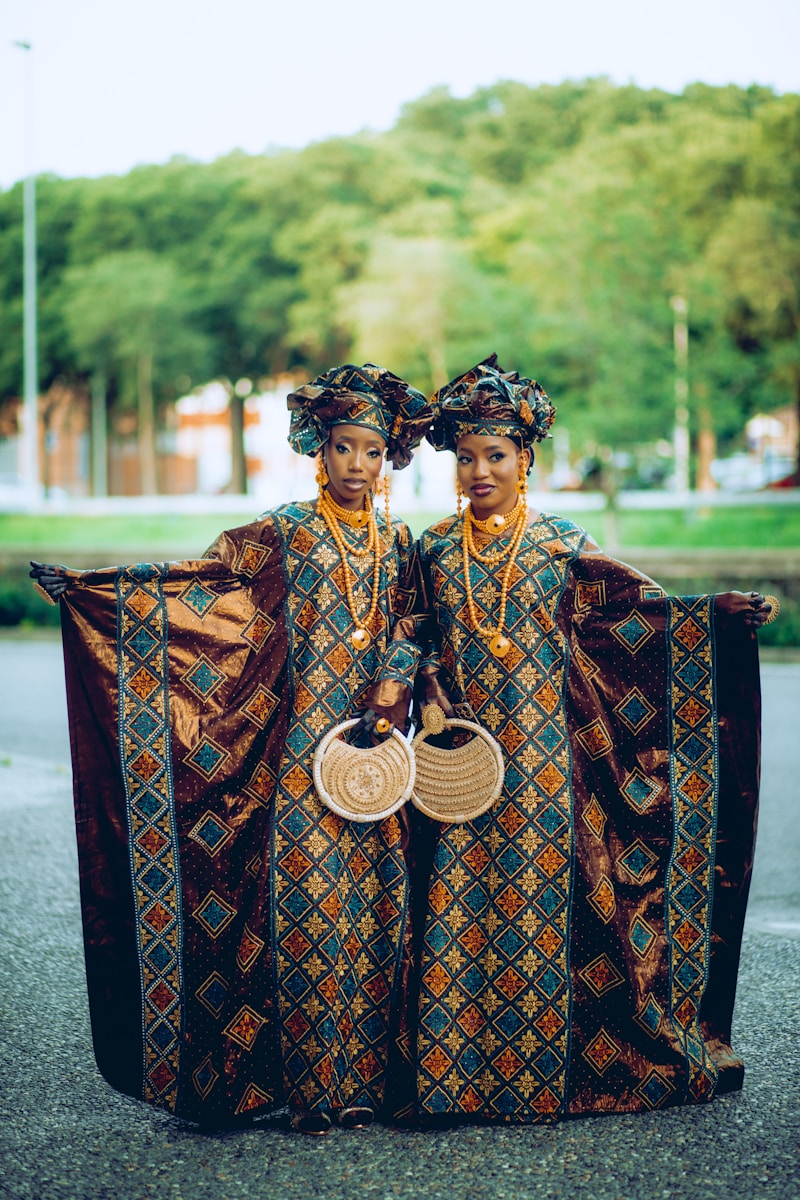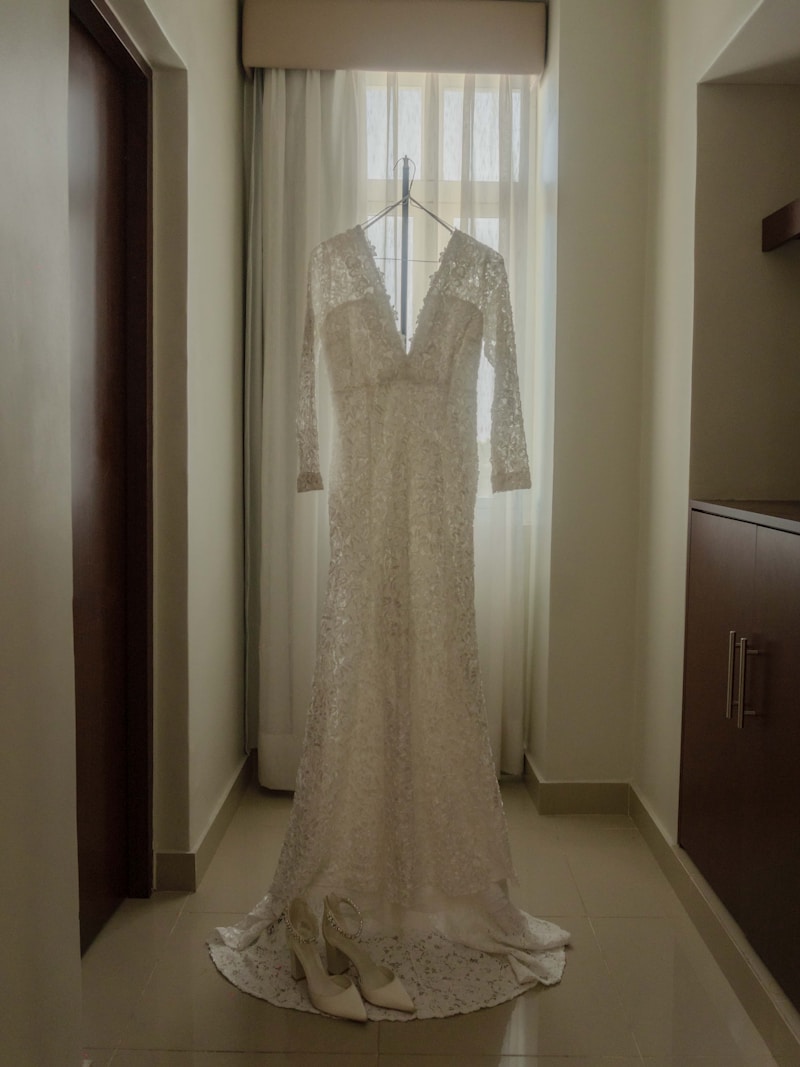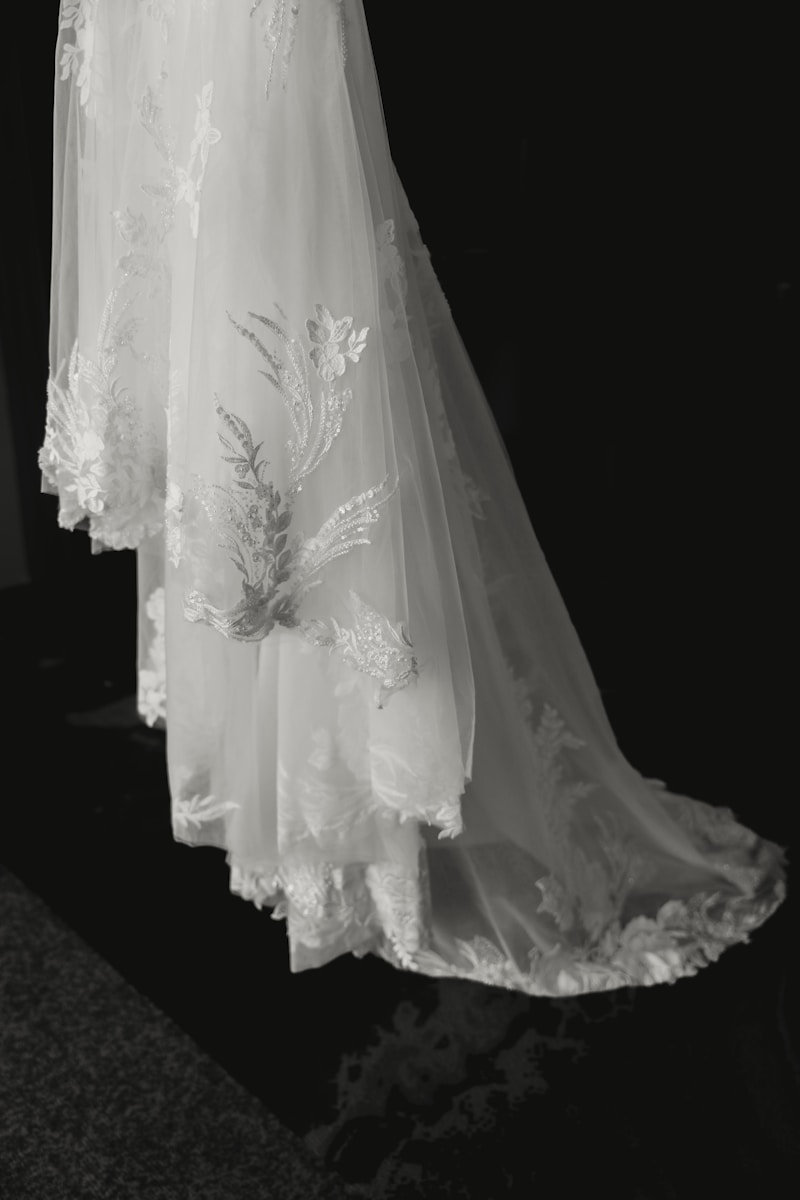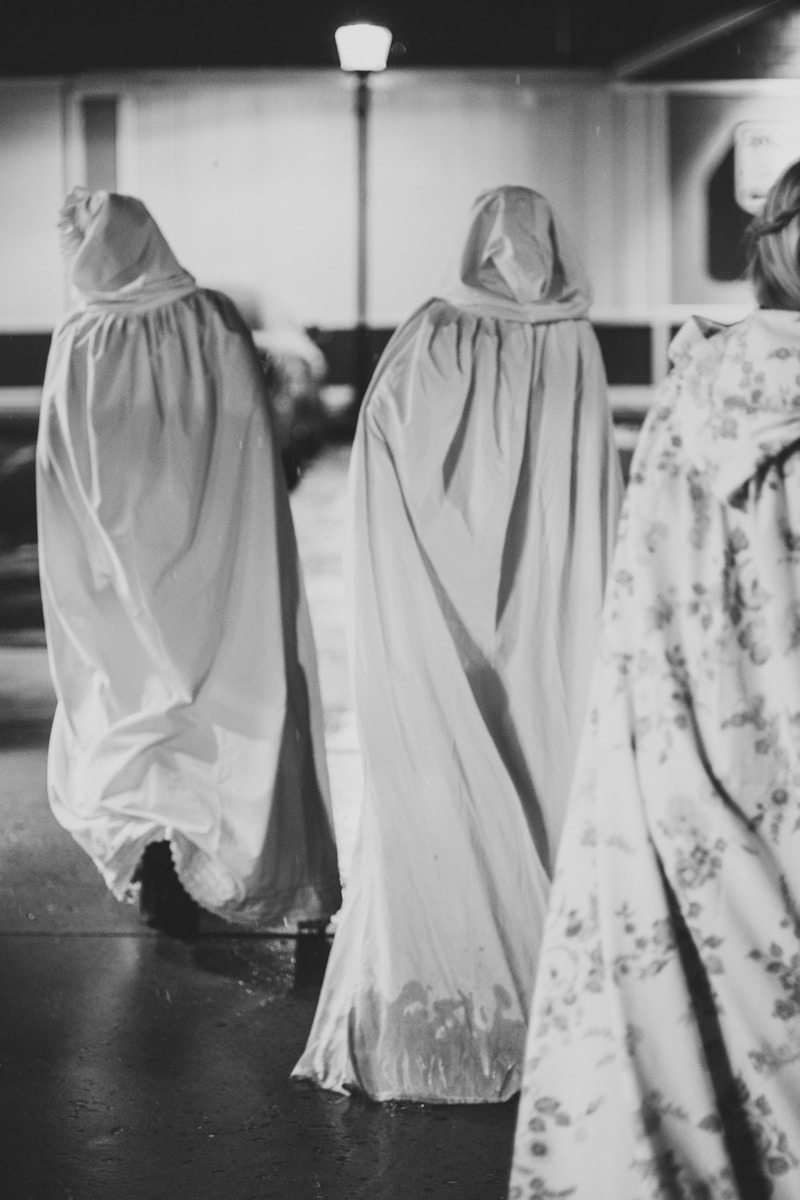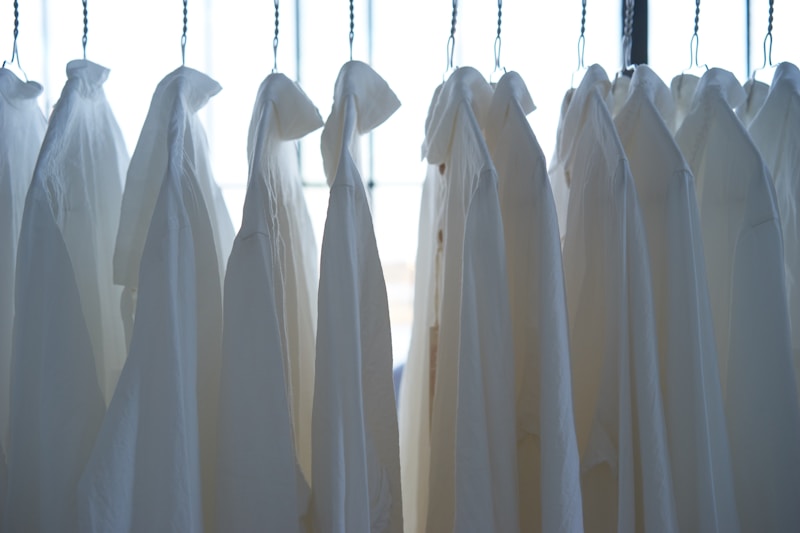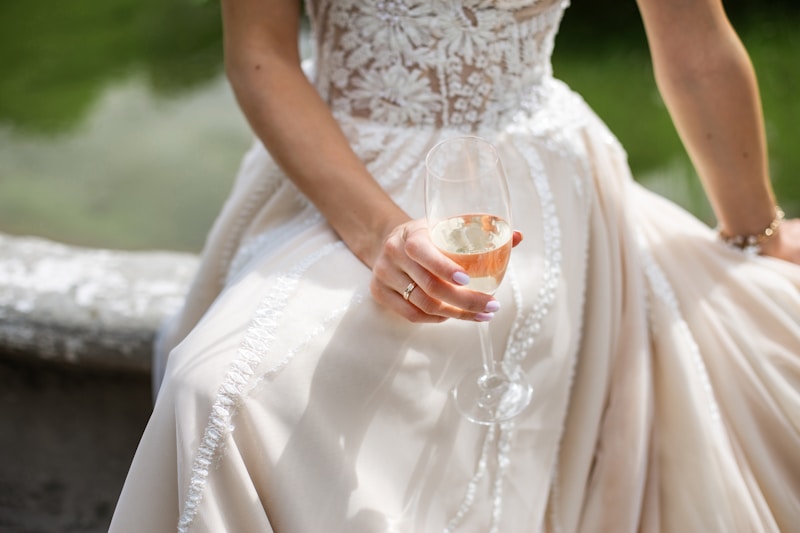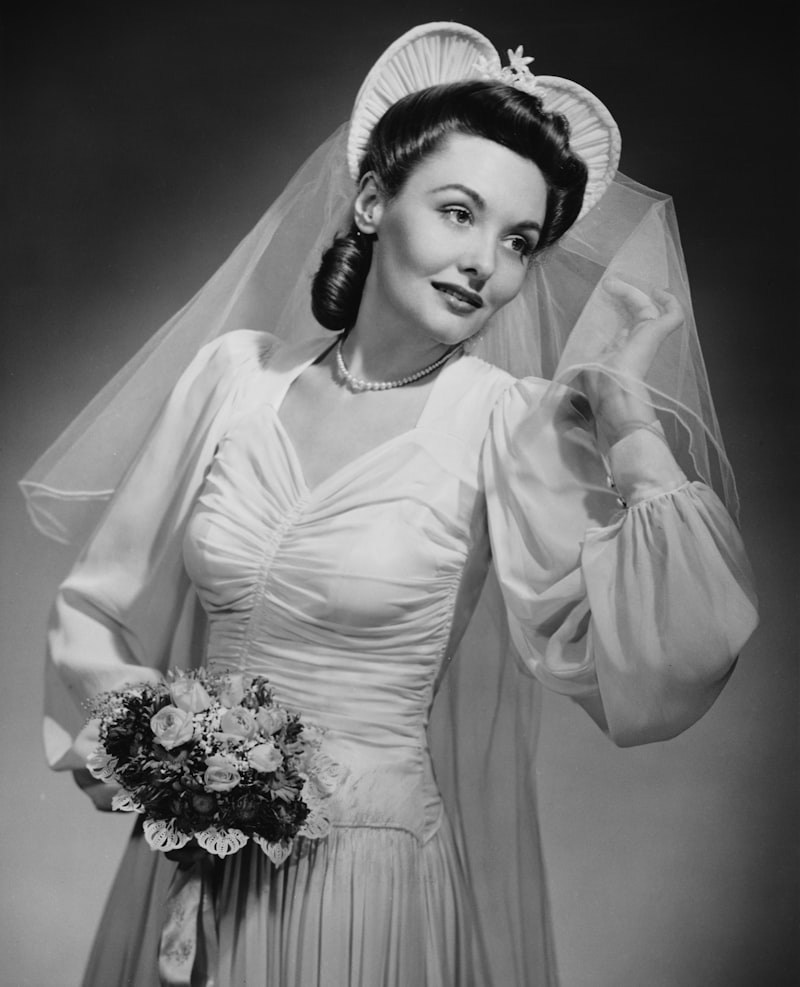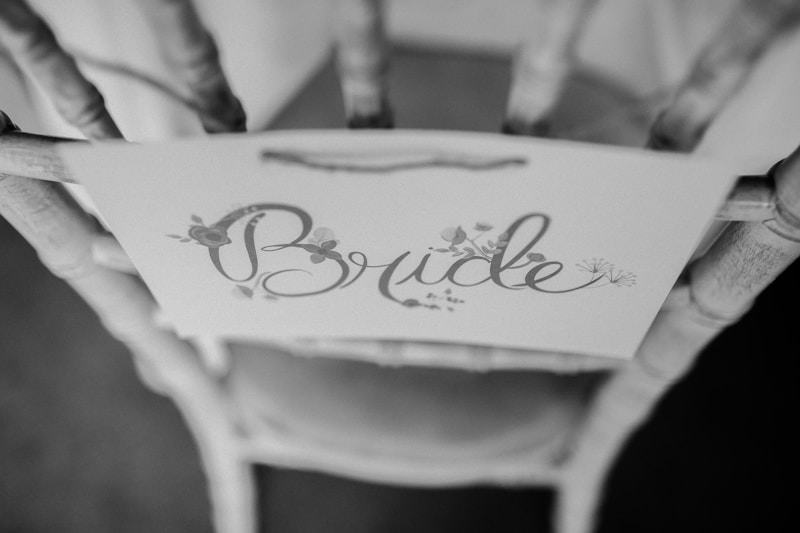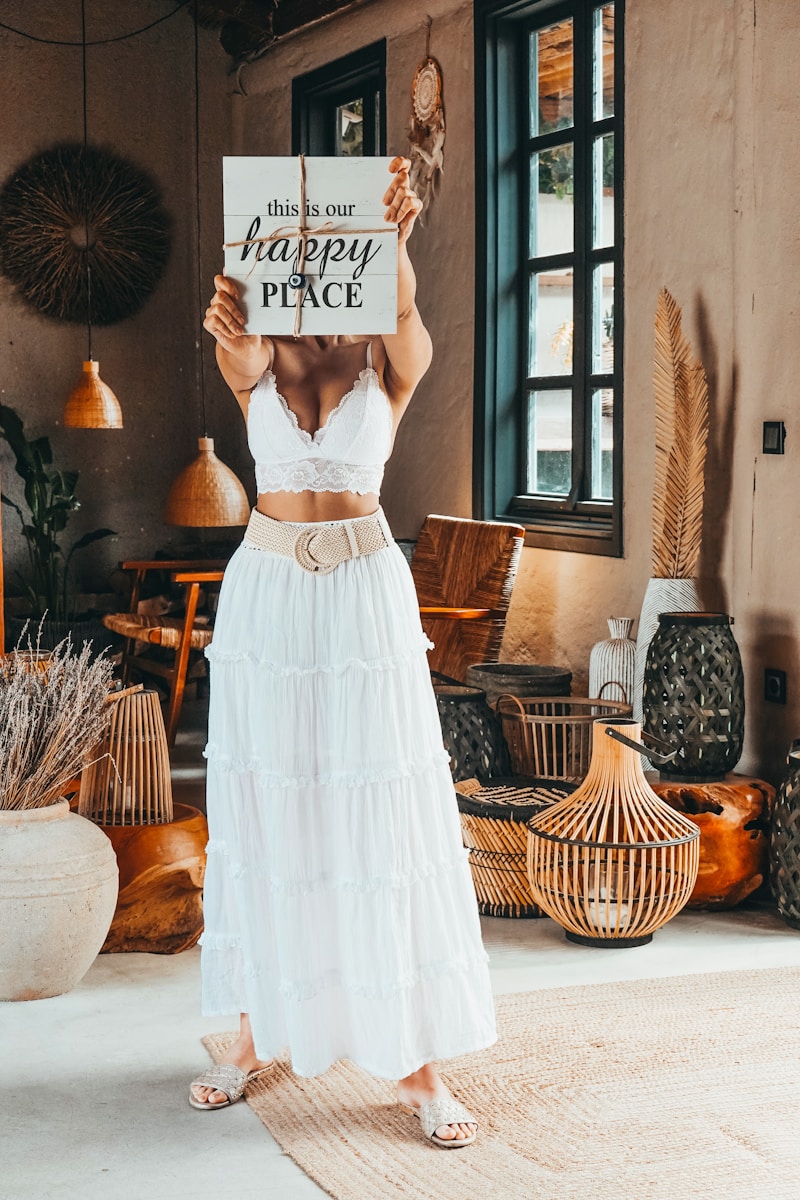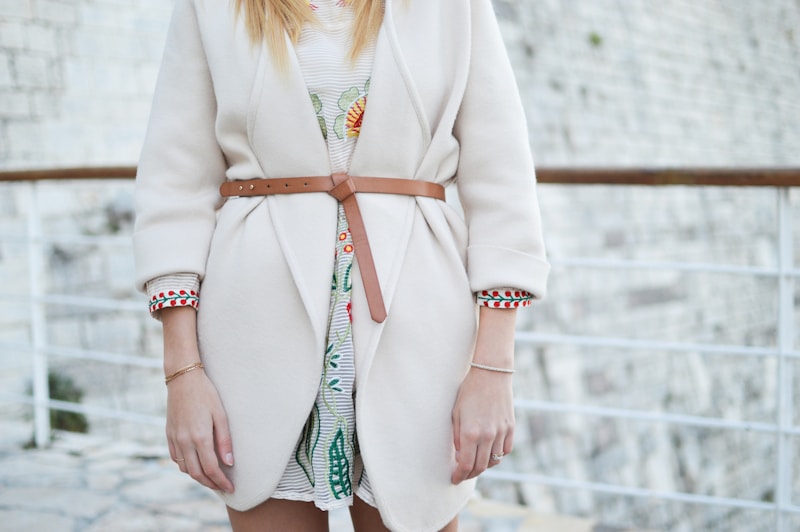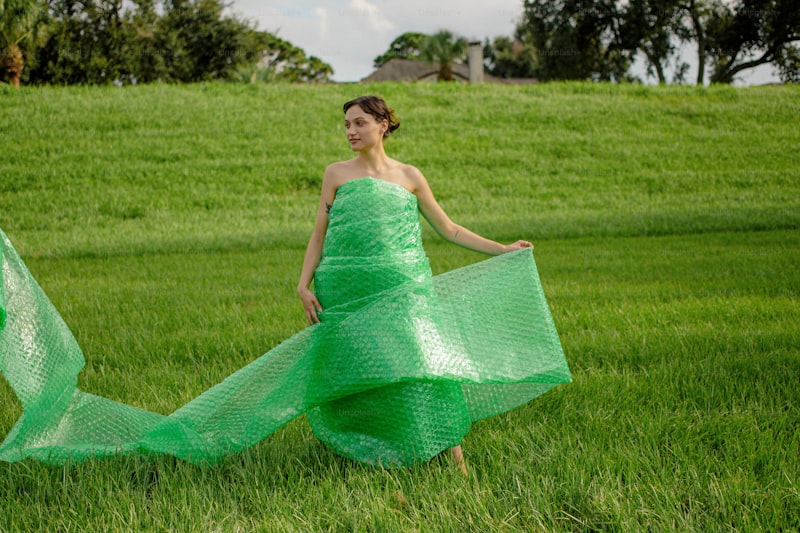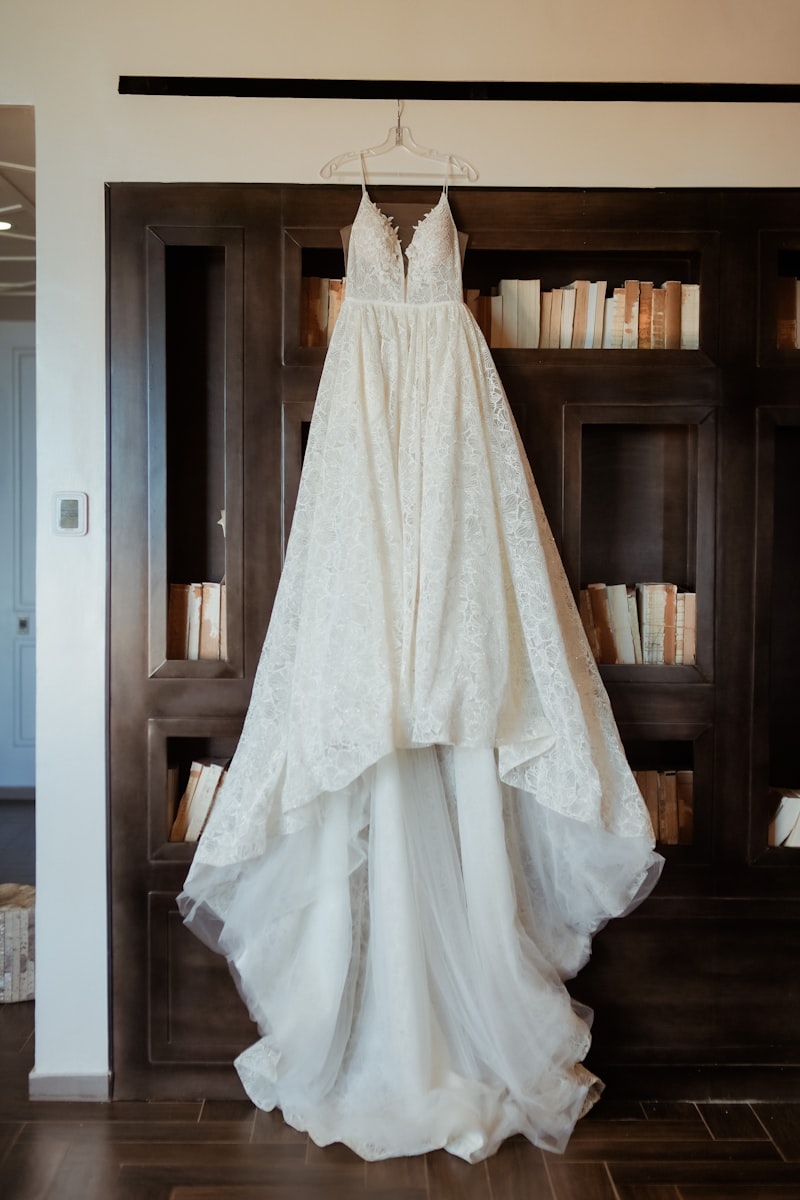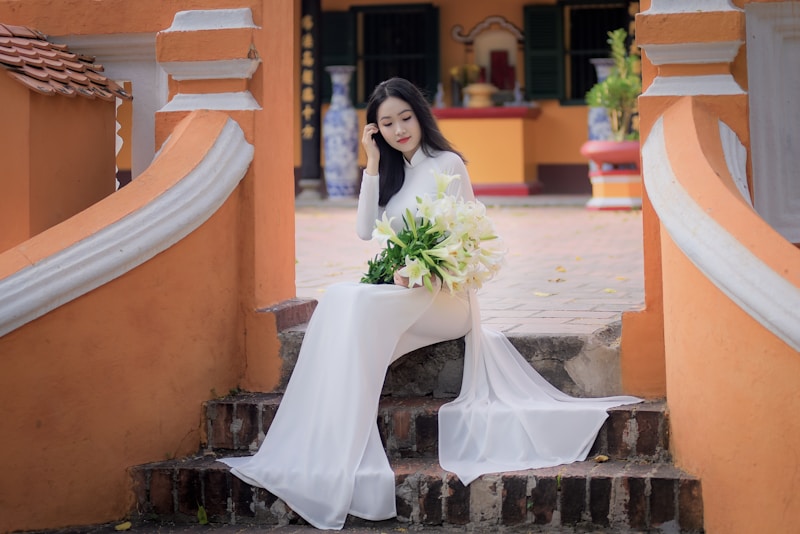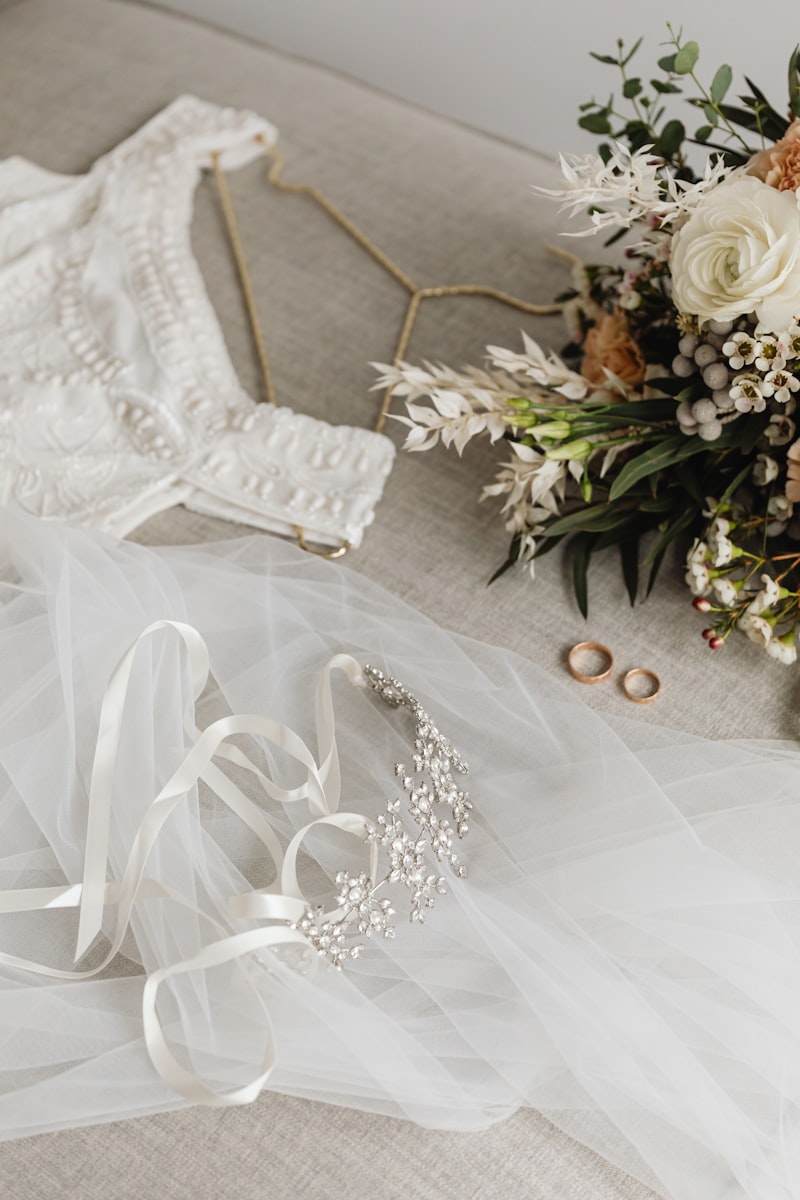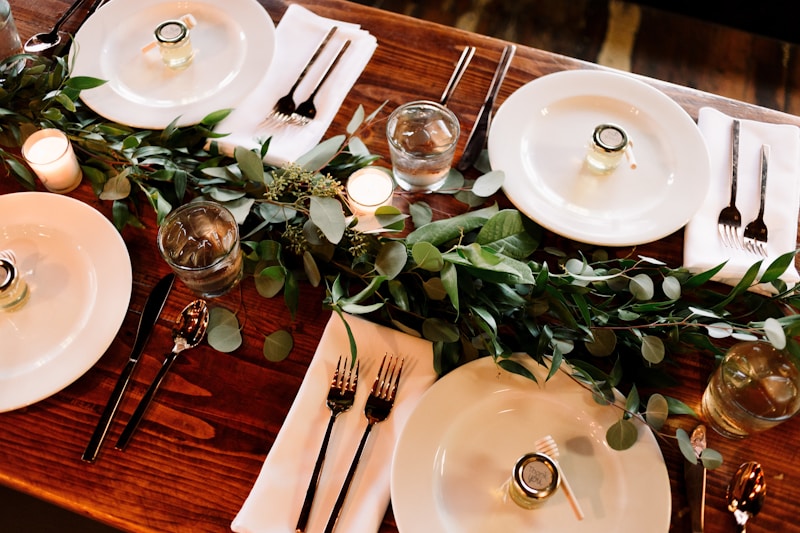Unveiling the Personal Stories Behind Unique Wedding Gown Designs
When it comes to weddings, few elements evoke as much emotion as the bride's gown. Behind every unique wedding gown design lies a tapestry of personal stories, cultural influences, and creative inspirations. In this article, we explore how these narratives shape wedding fashion and make each gown a one-of-a-kind masterpiece.The Emotional Connection of Wedding GownsA wedding gown is often more than just a piece of clothing; it symbolizes love, dreams, and the commitment of two individuals. When brides don these exquisite creations, they carry with them the stories of their journeys, hopes, and aspirations. Let's delve into some common themes seen in unique wedding gown designs.1. Family Heritage and Cultural SignificanceMany designers draw inspiration from their heritage, incorporating traditional elements into modern designs. For instance, a bride wanting to honor her Chinese background might opt for a cheongsam-style gown, characterized by its high collar and intricate embroidery. This gown not only reflects her family's history but also carries the weight of cultural significance.2. The Influence of Vintage and Retro StylesVintage styles are making a big comeback in the world of wedding gowns. Many brides seek to channel the elegance of eras past, whether that’s the roaring twenties flapper look or Victorian-era romance. Designers like Vera Wang and Pronovias have crafted gowns that embody vintage aesthetics while using modern fabrics and techniques. For example, a bride mi...
Bridal Fashion History: A Comprehensive Examination
Bridal fashion is a captivating aspect of clothing history that reflects not only the style of the times but also cultural, social, and even political influences. This article delves into the evolution of bridal attire, exploring its historical significance and the various trends that have shaped the way brides dress on their wedding day. From ancient traditions to modern influences, we will uncover the fascinating tale of bridal fashion.The Origins of Bridal FashionBridal fashion can be traced back to ancient civilizations where wedding ceremonies were rooted in tradition. In ancient Rome, brides wore a tunic called a tunica recta, symbolizing purity and modesty. Conversely, in ancient Greece, brides adorned themselves with flowing white garments, signifying their connection to the gods.Bridal Fashion in the Middle AgesThe Middle Ages saw the emergence of elaborate bridal gowns, often reflecting the social status of the bride. Wealthy women wore sumptuous fabrics like silk and velvet, embroidered with gold and silver threads. This period also introduced the famous bridal veil, which signified modesty and protection from evil spirits.EraBridal AttireSignificanceAncient RomeTunica RectaPurityAncient GreeceFlowing White GarmentsConnection to GodsMiddle AgesElaborate GownsSocial Status & ModestyThe Victorian Era and the Introduction of White Bridal GownsThe Victorian era marked a significant transformation in bridal fashion with the introduction of the white wedding gown, prima...
Exploring Modern Bridal Silhouettes and Styles for the Modern Bride
Weddings have always been a celebration of love and commitment, and as such, bridal fashion has evolved dramatically over the years. Today's brides are not confined to traditional dresses; instead, they embrace modern bridal silhouettes and styles that reflect their personality and the unique essence of their special day. In this article, we will explore various trends and styles, ensuring that every bride can find her perfect match. The Evolution of Bridal Fashion Bridal fashion has always played an essential role in weddings. Historical styles began with long flowing gowns, often embodying the cultural values of their time. However, the modern bride now has a wide variety of options. From minimalistic designs to ornate embellishments, the array of choices can be overwhelming.Today, let's explore some of the most popular trends in modern bridal silhouettes and styles.Popular Modern Bridal SilhouettesWhen it comes to bridal silhouettes, understanding body types is key. Here are several popular modern bridal silhouettes:SilhouetteDescriptionA-LineThis silhouette features a fitted bodice and flows out to the ground, resembling the shape of a capital letter 'A'. It is flattering for most body types.MermaidThe mermaid silhouette hugs the body from the chest down to the knee, then flares out. It's perfect for brides wanting to showcase their curves.Ball GownA classic choice, the ball gown silhouette has a fitted bodice and voluminous skirt, making it ideal for formal and fairy-tal...
Exploring Historic Bridal Fashion Trends Revisited
Bridal fashion has always been a captivating topic, reflecting cultural shifts, societal values, and artistic expressions through the ages. As modern brides look back over the years, many are inspired by the historic bridal fashion trends that have shaped wedding attire. In this article, we will delve into notable bridal styles from different eras, explore what makes them timeless, and provide insights into how today’s brides can incorporate these trends into their special day.A Journey Through Time: Iconic Bridal Fashion ErasWhen we think of bridal fashion, several key eras stand out, each characterized by distinct styles, fabrics, and aesthetics. Below is a brief overview of some iconic bridal fashion trends over the decades:EraKey FeaturesVictorian Era (1837-1901)Elaborate gowns with lace, high collars, and long trains. Brides often wore darker colors, commonly using rich fabrics like silk and velvet.Roaring Twenties (1920s)Simplicity and elegance with straight, drop-waist silhouettes adorned with beadwork and fringe, reflecting the flapper style.Post-War Glamour (1950s)Full skirts and fitted bodices were popular, often incorporating tulle and lace. The iconic silhouette was influenced by Christian Dior's ‘New Look’.Bohemian Chic (1970s)Free-spirited styles featuring flowing fabrics, floral crowns, and off-the-shoulder designs became staples for unconventional brides.Modern Minimalism (2000s-present)Simplicity reigns with clean lines, sleek silhouettes, and minimalist desi...
Exploring Bridal Gown Trends Through the Decades: A Timeless Journey
Bridal gowns have always been a symbol of love and celebration, evolving dramatically over the decades. From the elaborate styles of the 1920s to today’s minimalist trends, each era has its own unique fashion signature. In this article, we’ll explore the most significant bridal gown trends from the past century, providing insights for brides-to-be who are searching for the perfect dress that aligns with their style. Whether you're looking for vintage inspirations or contemporary touches, we've got something for you!The Roaring Twenties: Glamour and BeadsThe 1920s introduced a new era of fashion that was all about glamour. Bridal gowns became all the rage with their flapper silhouettes, often embellished with beads and sequins. Brides embraced knee-length dresses, a departure from the traditional floor-length wedding gown.CharacteristicsMaterialsPopular ColorsFlapper style, drop waistSatin, silkWhite, ivoryBeading, embroideryLace accentsPastelsBrides accessorized with cloche hats and feathered headbands, creating an elegant yet playful look that defined the decade.The 1930s: The Golden Age of HollywoodThe 1930s saw bridal fashion being influenced heavily by Hollywood glamor. Iconic actresses like Jean Harlow and Ginger Rogers set the stage for luxurious fabrics and dramatic silhouettes. Brides started to prefer gowns that featured longer trains and flowing lines that accentuated the natural figure.1930s Hollywood bridal gownsInfluences and StylesAs film industry stars took to ...
The Role of Fabric in Bridal Fashion Evolution: A Journey Through Time
IntroductionThe world of bridal fashion is a captivating arena that has evolved dramatically over the years. A significant factor contributing to this evolution is the choice of fabric. Fabrics not only influence the aesthetics of bridal gowns but also impact the comfort and overall experience of the bride on her special day. In this article, we will explore the pivotal role that fabric has played in the evolution of bridal fashion, examining historical trends, modern innovations, and future possibilities.The Historical Perspective on Bridal FabricsBridal fashion has a rich history that reflects cultural shifts and societal values. In ancient times, the choice of fabric was often reserved for the affluent, with silk and satin being primary choices for royal weddings. As we move through the centuries, we notice significant changes in the preferred materials.EraCommon FabricsCharacteristicsMiddle AgesSatin, VelvetLuxury and opulence, with rich colors and heavy drapingRenaissanceSilk, BrocadeIntricate patterns and embroidery, highlighting wealthVictorian EraLace, TaffetaRomantic styles with elaborate details and modest cutsModern EraChiffon, OrganzaLightweight and airy, suitable for relaxed and outdoor weddingsModern Innovations in Bridal FabricsAs we stepped into the 20th century, the bridal industry began to embrace a variety of fabrics that offered brides more options. The invention of synthetic fabrics revolutionized the bridal gown market. Nylon, polyester, and blends allow...
Timeless Elegance in Wedding Attire: A Guide to Unforgettable Wedding Styles
When it comes to weddings, every couple dreams of creating an image of timeless elegance. The attire worn by the bride, groom, and the entire bridal party plays a pivotal role in establishing this desired vibe. In this article, we will explore the concept of “timeless elegance in wedding attire,” discuss essential elements to consider, and provide expert tips to help you achieve that perfect look for your big day.Understanding Timeless EleganceTimeless elegance transcends trends; it encapsulates classic styles that remain beautiful across generations. When thinking about wedding attire, it's essential to focus on fabrics, cuts, and colors that evoke a sense of grace and sophistication. Classic silhouettes, such as A-line dresses for brides and tailored suits for grooms, are perfect examples of styles that embody timelessness.Key Elements of Timeless Wedding Attire Element Description Fabrics Choose high-quality materials like silk, satin, or lace to enhance elegance. Colors Opt for neutral or soft shades, such as ivory, blush, or light gray. Silhouettes Classic styles like A-line, ball gown, or tailored suits create a sophisticated look. Accessories Keep adornments minimal yet refined; think elegant veils or simple jewelry. Bridal Attire: The DressThe wedding dress is often the focal point of the ceremony. To achieve a look of timeless elegance, consider the following: Choose a classic silhouette: A-line or ball gown dresses a...
The Cultural Significance of the Wedding Dress Throughout History
Throughout the ages, the wedding dress has evolved beyond mere fabric and design, embodying rich cultural significance and reflecting societal values, traditions, and the essence of love. This article explores the intriguing historical journey of wedding dresses, their meanings in various cultures, and their evolution over time, shedding light on the social implications tied to this iconic garment.The Historical Journey of Wedding DressesThe history of wedding dresses is a testament to how fashion intertwines with cultural practices. Wedding dresses have been worn in various styles across the globe, each representing a unique cultural flavor and societal status. Below is a summarized timeline highlighting key periods in the evolution of wedding dresses:Time PeriodStyle and SignificanceAncient Rome and GreeceBrides wore tunics and crowns of flowers, symbolizing purity and fertility.Medieval Period (12th-15th Century)Rich fabrics and formal attire became popular among nobility, often incorporating royal colors.Victorian Era (19th Century)Queen Victoria popularized the white wedding dress in 1840, symbolizing purity and elegance.Modern Era (20th Century onwards)Variety in styles emerged, with diverse cultural influences shaping wedding dresses across the globe.The Cultural Significance Across Different SocietiesMarriage customs and attire vary significantly around the world, influenced by geographical, historical, and religious contexts. Below, we explore how the wedding dress h...
The Fusion of Traditional and Modern Bridal Styles: A Timeless Elegance
Weddings have always been a beautiful celebration of love, and the attire worn by brides plays a crucial role in this celebration. Over the years, the fusion of traditional and modern bridal styles has gained immense popularity, symbolizing the blend of cultural heritage with contemporary fashion. In this article, we will explore the various aspects of this fascinating trend, including its origins, current trends, and how brides can achieve the perfect balance in their wedding attire.Understanding the Concept: What is the Fusion of Traditional and Modern Bridal Styles?The fusion of traditional and modern bridal styles refers to the integration of classic elements from cultural dress with contemporary design features. This trend allows brides to honor their heritage while embracing contemporary aesthetics. It often involves incorporating traditional fabrics, patterns, and accessories into modern silhouettes, resulting in a unique and personalized bridal look that resonates with both history and modernity.Origins of the Fusion TrendThis trend has its roots in globalization and the increased appreciation of diversity in fashion. Brides across different cultures are increasingly interested in wearing designs that reflect their heritage while also incorporating elements that are trendy and fashionable. This fusion trend is evident not only in attire but also in wedding themes, decorations, and even food. As cultures blend, so too do the styles, creating a rich tapestry of options ...
Embracing Individuality in Wedding Dress Selections: A Guide to Personalizing Your Big Day
Weddings are a celebration of love, and every couple deserves to express their unique style on this momentous occasion. When it comes to wedding dress selections, embracing individuality can transform a traditional ceremony into a personal statement. In this article, we will explore the various aspects of selecting a wedding dress that reflects your personality, including trends, tips, and options available to make your dress truly yours.The Importance of Individuality in Wedding Dress SelectionYour wedding day is one of the most important days of your life, and your dress should capture your essence. Personalizing your wedding dress selection is not just about aesthetics; it’s also about telling your story. A unique dress can provoke emotions, symbolize your journey, and create lasting memories. Here are a few reasons why embracing individuality is essential:Self-Expression: Your dress should reflect who you are, allowing you to express your individuality.Memorable Impressions: A unique gown can make your wedding day unforgettable for both you and your guests.Cultural Significance: Infusing cultural elements into your wedding attire can celebrate your heritage.Beyond Trends: Forget about what is trending. Instead, focus on what makes you feel beautiful and confident.Trends that Inspire IndividualityWhile it's essential to let your personality shine through, it doesn't hurt to look at current trends for inspiration. Some 2023 wedding dress trends that embrace individuality in...
Timeless Details in Modern Bridal Design: A Perfect Blend of Tradition and Innovation
Your wedding day is one of the most significant milestones in your life, and every detail matters. In the realm of bridal design, the concept of "timeless details in modern bridal design" is gaining much attention. This phrase encapsulates the fusion of classic elegance with contemporary trends, allowing brides to express their unique identities while honoring traditional values. In this article, we will explore various elements that define modern bridal design, how timeless details enhance the overall look, and offer some tips for brides-to-be.The Evolution of Bridal DesignWeddings have seen considerable transformations over the years. Traditional weddings often included predictable elements such as white gowns, classic floral arrangements, and a formal reception. However, modern bridal design allows for a vast array of styles, cultures, and personal touches. This transformation emphasizes the importance of incorporating timeless details that still resonate with today’s bridal aesthetic.The Significance of Timeless DetailsTimeless details are the classic elements that stand the test of time, continuously appealing to brides regardless of the era. These elements not only enhance the beauty of a wedding dress but also infuse the event with sentimentality and tradition. Some examples of timeless details in modern bridal design include:Timeless DetailDescriptionLace AccentsLace has remained a beloved choice for bridal gowns for centuries, offering a sense of delicacy and feminin...
Fashion-Forward Wedding Dresses for Contemporary Brides: A Complete Guide
Weddings are momentous occasions where love, culture, and personal expression intertwine. For contemporary brides, selecting the perfect dress is more than just about fabric; it's about reflecting their unique style and personality. In this article, we’ll explore the latest trends in fashion-forward wedding dresses, discuss key elements that define modern bridal couture, and showcase how brides can express individuality on their special day.Understanding Contemporary Bridal FashionContemporary bridal fashion has evolved with time, emphasizing individuality, sustainability, and innovation. Modern brides are not just looking for a traditional white gown; they want something that resonates with their lifestyle, values, and aesthetics. The key elements that define fashion-forward wedding dresses include: Innovative Silhouettes: Expect to see a mix of traditional and avant-garde designs. Sustainable Materials: The rise of eco-friendly fabrics and production methods. Personalization: Customizable dresses that allow brides to add their unique touch.Trending Styles for the Modern BrideAs bridal trends shift, so do the styles that contemporary brides are gravitating towards. Here are some captivating designs that are making waves: Style Description Bohemian Chic Flowy silhouettes with intricate lace detailing, perfect for a romantic outdoor wedding. Minimalist Elegance Clean lines and understated designs, often fea...
Bridal Fashion Exhibitions and Their Cultural Relevance
Exploring the Significance of Bridal Fashion ExhibitionsBridal fashion exhibitions have become a pivotal part of the wedding industry, showcasing the latest trends in bridal attire and accessories. These exhibitions not only highlight the creative talents of designers but also reflect cultural values and traditions associated with weddings across different societies. In this article, we will delve into the significance of bridal fashion exhibitions, their cultural relevance, and how they serve as a platform for both innovation and tradition in the world of weddings. The Evolution of Bridal Fashion ExhibitionsThe origins of bridal fashion exhibitions can be traced back several decades, evolving from simple showcases to grand events that attract thousands of attendees. These exhibitions can be found worldwide, from major cities like New York City and Paris to emerging fashion capitals like Mumbai and Shanghai. They often feature a diverse range of designers, giving attendees firsthand insights into the latest in bridal fashion trends. Exhibitions like Bridal Fashion Week in New York City are especially significant, as they set the tone for the upcoming year’s wedding styles. Designers present their collections on runways, allowing brides-to-be, industry professionals, and fashion enthusiasts to witness the creative process behind wedding attire.Why Cultural Relevance MattersBridal fashion is deeply intertwined with cultural practices and heritage. Different cultures have distin...
Sustainable Practices in Wedding Dress Design: A Guide for Eco-Conscious Brides
In recent years, sustainability has become a focal point in various industries, and the world of fashion is no exception. As more brides seek to make eco-friendly choices for their wedding day, the importance of sustainable practices in wedding dress design has gained prominence. This article will explore various sustainable practices that designers are employing, along with tips for brides-to-be on how to choose a wedding dress that aligns with their values.Understanding Sustainable FashionSustainable fashion refers to clothing designed, manufactured, distributed, and used in ways that are environmentally friendly, socially responsible, and economically viable. In terms of wedding dresses, sustainability can manifest in various forms—ranging from the materials used to the production methods employed.Why Choose Sustainable Wedding Dresses?Opting for a sustainable wedding dress can have numerous benefits. Here are a few key reasons:Environmental Impact: Traditional wedding dress production often involves the use of toxic chemicals and non-renewable resources. Sustainable practices reduce these impacts.Support for Ethical Brands: Many brands prioritizing sustainability also advocate for fair labor practices, ensuring workers are treated ethically.Unique Designs: Sustainable brands often focus on unique materials and designs, leading to one-of-a-kind dresses that stand out.Conscious Consumption: By choosing a sustainable wedding dress, brides contribute to a growing movement tha...
Innovations in Bridal Dress Technology: Transforming the Wedding Experience
In the ever-evolving world of fashion, one segment that has seen a remarkable transformation is bridal wear. The wedding industry is not just about grand celebrations and emotional vows; it is also about style, comfort, and cutting-edge technology. Innovations in bridal dress technology are changing the way brides approach their special day, allowing them to express individuality like never before. In this article, we will delve into the latest technologies in bridal dresses and how they are revolutionizing the wedding experience.The Evolution of Bridal FashionBridal fashion has come a long way from the traditional white gown. Historically, brides were confined to a limited range of styles and materials. Today, thanks to technological advancements, brides are embracing a spectrum of design choices. From 3D printing to smart textiles, the possibilities are endless. But what exactly does this innovation entail?1. 3D Printing TechnologyOne of the most groundbreaking technologies making waves in bridal fashion is 3D printing. This technique allows designers to create intricate, customized designs that were previously impossible. Brides can now realize their unique visions with precise detailing. For instance, a bride in New York can have a gown adorned with 3D-printed floral patterns that perfectly complement her wedding theme.Another advantage of 3D printing is sustainability. Traditional fabrication methods often produce waste, while 3D printing can significantly reduce materia...
A Journey Through Bridal Fashion Marketplaces and Trends
As couples around the world prepare to tie the knot, the wedding industry is experiencing significant transformations. With the rise of online shopping and the shift in consumer preferences, bridal fashion marketplaces have become vital hubs for brides-to-be seeking the latest trends and stylish wedding attire. In this article, we will explore the evolving landscape of bridal fashion marketplaces, key trends shaping the industry, and tips for brides shopping online.The Rise of Online Bridal MarketplacesIn recent years, the bridal fashion landscape has shifted dramatically due to the emergence of various online marketplaces. These platforms offer brides access to a wide range of designers and styles, often at competitive prices. Notably, websites such as JJ's House, ASOS Bridal, and Etsy have gained immense popularity, enabling brides to find unique and affordable options without leaving their homes.Advantages of Online ShoppingOne of the primary reasons brides are turning to online marketplaces is the convenience they offer. With just a few clicks, brides can browse an extensive selection of bridal gowns, accessories, and shoes. Additionally, online platforms often feature user reviews, detailed product descriptions, and size guides, making it easier for brides to make informed decisions. Here are a few advantages of shopping in online bridal marketplaces:AdvantagesDescriptionWide SelectionAccess to diverse styles and designers from around the world.Competitive PricingOften m...
Exploring Iconic Bridal Designers and Their Impact on Modern Weddings
The wedding industry is constantly evolving, and at the forefront of this evolution are the iconic bridal designers who shape trends, define styles, and create unforgettable moments for brides around the world. In this article, we will delve into the lives and work of some of the most influential bridal designers, their signature styles, and the significant impact they have on the bridal fashion landscape.Understanding the Role of Bridal DesignersBridal designers are not just creators of beautiful gowns; they are storytellers who craft the dreams of countless brides. Each designer brings their unique vision and craftsmanship to the table, transforming the traditional wedding dress into a canvas of artistry and fashion. From the intricate detailing to the choice of fabric, iconic bridal designers play a critical role in shaping the entire wedding experience.The Evolution of Bridal FashionBridal fashion has undergone significant transformations over the decades. The styles that once ruled the aisle have morphed into diverse interpretations of elegance, sophistication, and individual expression. Today, brides have a plethora of options, ranging from classic to contemporary designs.Timeline of Bridal Fashion Evolution1950s: Classic ball gowns with full skirts1980s: Dramatic volumes and lace2000s: Minimalist styles and sleek silhouettesPresent: Eclectic mix of cultures and stylesIconic Bridal Designers to KnowIn the world of bridal fashion, several designers have made a name for t...
Transitional Bridal Wear: From Classic to Chic
The world of bridal fashion is an ever-evolving landscape, where tradition meets modernity in beautiful harmony. As brides seek to strike the perfect balance between classic elegance and contemporary chic, transitional bridal wear has risen to prominence. This article delves into the journey of transitional bridal wear, exploring how it can seamlessly blend both styles to create stunning looks for today's bride.Understanding Transitional Bridal WearTransitional bridal wear refers to the garments that allow brides to transition seamlessly from traditional wedding ceremonies to modern receptions. These outfits cater to the multifaceted nature of a wedding celebration, giving brides the freedom to express their unique style while maintaining an essence of classic bridal beauty. This flexibility enables brides to adapt their look throughout the wedding day, ensuring they stay comfortable while looking stunning.The Rise of Transitional Bridal WearAs weddings become more personalized, the demand for transitional bridal wear has increased. Many brides are opting for styles that honor tradition but also embrace contemporary trends. Designers are responding with collections that offer versatile pieces, enabling brides to move effortlessly from one phase of their wedding day to another.Key Elements of Transitional Bridal WearWhen considering transitional bridal wear, several key elements come into play:ElementDescriptionVersatilityOutfits that can be styled multiple ways or combined wi...
Exploring Bridal Fashion During Significant Eras: A Journey Through Time
Bridal fashion has always been a reflection of cultural, social, and historical changes. Throughout the ages, weddings have evolved into grand celebrations that often symbolize the union of two families, and the attire worn by brides showcases the trends and styles of the time. In this article, we will delve into the fascinating evolution of bridal fashion during significant eras, highlighting the unique characteristics that define each period.The Victorian Era (1837-1901)The Victorian era marks a significant period in bridal fashion, primarily characterized by the influence of Queen Victoria. In 1840, Queen Victoria wore a white gown for her wedding to Prince Albert, a choice that revolutionized bridal attire. Before this moment, brides typically wore their best dresses in various colors. The introduction of the white wedding dress became a symbol of purity and sophistication.ElementDescriptionColorPredominantly white and ivorySilhouetteFull skirts with voluminous petticoatsFabricSilk, satin, laceDecorationHeavy embellishments, floral detailsThe Victorian bridal gown was often adorned with intricate lace and embroidery, emphasizing a bride's social status. Sleeves were typically long, and the silhouette was structured, creating a modest and elegant look. Bridal accessories like veils and bouquets also became popular during this era, adding a touch of romance to weddings.The Roaring Twenties (1920s)Moving forward to the 1920s, the Roaring Twenties brought about a dramatic shi...
Cultural Influences on Bridal Fashion: A Global Perspective
Bridal fashion has always been a fascinating amalgamation of cultural traditions, personal preferences, and evolving trends. As weddings are celebrated all over the world, the influences of each culture play a crucial role in shaping the attire that brides choose for their special day. This article delves deep into the cultural influences on bridal fashion, exploring how different traditions and customs from various regions impact the design, fabric, color, and style of bridal gowns across the globe. We will also touch upon related topics such as accessories, regional bridal attire, and even modern trends reflecting cultural heritage.The Historical Context of Bridal FashionBridal fashion is not merely about wearing a beautiful dress; it is steeped in history and tradition. For instance, in many cultures, the color of the bridal gown holds significant meaning. In Western cultures, white has long symbolized purity and new beginnings, with Queen Victoria of England popularizing the white wedding dress in the 19th century. However, in many Asian cultures, red is considered the auspicious color for weddings. This contrast highlights how cultural beliefs are integrated into bridal fashion.Color Significance in Bridal FashionCultural ContextWhiteWestern cultures (e.g., USA, UK)RedChinese, Indian culturesBlackTraditional mourning color in some Western cultures, but elegant choice in others (e.g., Africa)GreenSymbolizes fertility in many cultures (e.g., Middle Eastern traditions)Diver...
